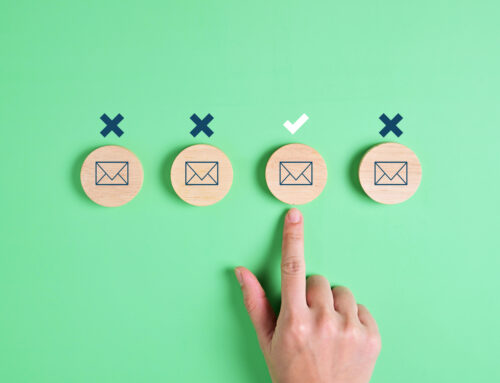Half of the battle with successful email marketing is getting your emails opened, period.
The decision to open an email is made in a split second (actually less than that). It comes down to two pieces of information that our brains process nearly instantaneously:
- Who is this from, and am I generally interested in what this person has to say? (The Sender or From Line)
- What is this particular email about and do I care right now about that? (The Subject Line)
Today, let’s look at the From Line or Field.
Seems like it should be super obvious, right? As with most nonprofit marketing decisions, however, it’s good to slow down and think it through. Several studies suggest that the From Line is even more important than the subject line, so it’s worth some thought.
Here are a few things to consider.
5 Factors in Getting the From Line Right
First of all, remember that the From Line is actually two things: the name that appears in people’s inboxes and the email address it is sent from (which is often hidden in the inbox unless people open the email).
CONSISTENCY. In general, you want to consistently send from the same names and addresses. Consistency makes your email more recognizable, and therefore more likely to be opened. If your readers open email from that address regularly, it’s good for your email deliverability and sender reputation too.
AVOID ROLE EMAIL ADDRESSES. It’s best to get away from generic role-based email addresses like newsletter@ or info@. It’s hard to know who if anyone is really behind the address, so it’s better to use variations on the names of real human beings or the organizational name as a whole. For example, you could use FirstName@ for personal emails and FirstName.LastName@ for bulk sending. Even if you are stuck with sending from a role email address, change the sender name. No one wants to open mail from “Info.”
USE A RECOGNIZABLE NAME. This is where you may need to do some testing because it can get a bit tricky. Regardless of the actual email address used, be sure to fill in the From Field with a name that readers will recognize.
If someone on your staff is recognizable by their own personal name as opposed to the organization’s (perhaps a founder, thought leader, or community organizer), using that person’s first and last name alone could work.
If not, you are probably best using the nonprofit’s name. However, there’s some research that says people are much less likely to open emails from organizations over individuals.
So, you might want to try some combination of the person’s name and the organization’s name. But you only have about 20 characters on mobile . . . It’s a challenge!
Again, this is where you might want to do some testing. You can always send from the same email address, but just play around with what you put in the sender field to see what happens.
CHANGE THE SENDER BASED ON SEGMENTS. If you are actively managing your mailing lists, your decisions about sending names could be related to your list segmenting strategies. If one particular segment of your list is more likely to connect with and recognize a particular staff person, you could try using that person’s name.
BE SURE PEOPLE CAN REPLY. No-reply emails are awful. It’s OK to use a reply address that is only checked once a day. But do make sure someone is going through it and looking for real human beings responding amongst all the out-of-office replies. Replies improve your sender reputation too.
Would you like to learn more about email engagement? We’re hosting two webinars on that topic on October 1 & 3, 2019.





